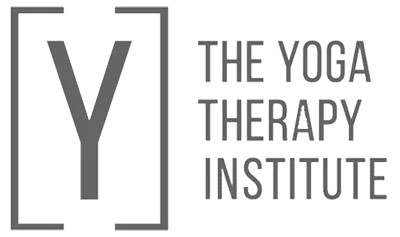A conversation with Montserrat G. Mukherjee C-IAYT

As the founder and Programme Director of the Yoga Therapy Institute and with years of guiding clients and students through the practical applications of therapeutic yoga, Montserrat has acquired a wealth of experience and knowledge, which she shares with clarity and enthusiasm. At the same time, she brings her irrepressible and curious spirit to all who work with her. Bringing joy and laughter to every session, Montserrat inspires as she teaches and this prompted me to ask her what she believed to be the qualities that are essential to working effectively as a yoga therapist.
The essential qualities of a yoga therapist?
The first one that springs to mind is the desire to help and support – to be of service to ourselves, as well as others. Desire is the engine that powers our intention to help, although it is important to realise that good intentions need to be backed up with sound training and an absolute awareness of safety. This sense of safety begins with us – we need to understand how to be compassionate and respectful of ourselves before we can hold that safe space for others. Finding a balance between our desire to help and our capacity to be a safe pair of hands, is how yoga therapists can be of service to others.
How does this ability to work safely within ourselves develop?
It begins with self-awareness and compassion. If we can apply these to ourselves, we can facilitate this development in others. Self-awareness grows organically and takes time. Just as in nature, where there is a season for all things, patience, acquiescence and being fully present are great ‘healers’ and lead to acceptance and understanding. Having allowance for what is, without judgement, creates a space where we can be the secure support our clients need to resource themselves. It means that we can co-work with our clients and tune into their issues without becoming attached to them. The focus remains on the client – always! Compassion flows from self-work, knowledge of safely and applying the principles of yoga therapy with care.
Where does an awareness of trauma-informed practices fit into the skill set?
Trauma-informed and Trauma Sensitive Training work are fairly new to our Yoga Therapy training but it is of vital importance. Yoga Therapy is not about releasing trauma, which is beyond our scope of practice but about being aware of the existence of trauma and how it can vary in complexity and severity. When we work sensitively, acknowledging trauma, but without a power dynamic or telling our clients what to do, we establish a nurturing and trusting therapeutic relationship. It is within this space that we collaborate with our clients so that they can grow, acquire resilience and make better choices. We, therefore, encourage our students to add Trauma-Sensitive training to their skillset and recommend self-work under the supervision of a proper facilitator.
We often hear the term heal or healing in relation to Yoga Therapy. Do you think this is appropriate?
Yoga therapists are not healers – but we facilitate healing. We work together with our clients, without any hierarchies, applying adapted practices, invitational verbal cues and connecting in a way that empowers them to take the steps on the journey towards their own ‘healing’. We co-create with our clients. In Yoga Therapy there are no “gurus” and we do not work from the ego. We need to remain humble in our work.
Is the quality of adaptability desirable for a yoga therapist?
Within the essential qualities of a yoga therapist, being adaptable enables us to respond effectively to our clients, who can be different from one moment to the next. When we can effortlessly adapt practices to meet our clients at their point of need, we work on their terms. I am often heard to say “it depends…” and this perfectly illustrates the nature of the work we do. We teach our students a variety of techniques, which they can then apply in an adaptive way according to the circumstances, in each moment. This creates the freedom for each therapist to stay true to their own teaching style but provides an overarching flexible framework, which provides a secure point of reference and a thorough understanding of safety guidelines.
Why is patience so vital in our work?
Our learnt knowledge deepens from experience, gathered over years and by working with many different people, across all echelons of society. Experiential, organic growth and gradual improvement are the basis for sustainable progress, for both teacher and client. As yoga therapists, we tend to be generalists, not specialists and this encourages us to keep learning. The fast-paced demands of today’s world can make us feel pushed to do everything quickly and to look for instant gratification and results. Yoga philosophy teaches us that there are no shortcuts to true knowing – anything, whether it’s the practice of yoga or the proficiency at a craft, everyone has to progress through certain stages of understanding. Patanjali reminds us that this process of personal growth and development, of refining the mind and changing our habits, is something that happens gradually, over a long period of time and everyone will move at a different pace.
What are the other essential qualities we need to build the most effective relationships with our clients?
Be friendly, warm, accessible and completely present. Studies have shown that if a client has a positive connection with their therapist, they progress more quickly. Working with the BPSS model means that we see every client as a whole person – we work with all aspects of the human experience. Developing these qualities will determine how successful a yoga therapist will be in growing their practice, synchronously, while contributing to their community.
Curiosity is another quality that enhances your contribution as a yoga therapist as it encourages you to keep learning, to maintain a genuine interest in every client’s unique story and to find the “why” in every connection. Broaden your mind and your capacity to help others by learning from your own practices – experiencing these for yourself – embodying and understanding them. In this way, you will be able to work authentically and thoughtfully with your clients.
Keep it simple – in many cases, less is more and it is the selective application of the practices from your extensive repertoire, which will allow your clients to thrive.
We spoke earlier about how crucial it is to practice self-compassion and self-care in order to be a safe pair of hands for your clients. Which self-care practices do you personally embrace, that support you in your life and work?
I dance like nobody is watching! Every morning, after a cup of green tea, I put on my favourite 80’s and 90’s playlist and I dance around the house in complete abandon. I channel my inner disco diva and it lifts my spirits like nothing else can. Only then do I have my breakfast and continue with my day.
I spend time on my yoga mat every day, whenever the mood takes me. I move in a way that feels organically right for me at that moment and it can be accompanied by music or in contemplative silence. I also make time, every day, for a short 20-minute rest, using a Yoga Nidra meditation. I do regular weight training to maintain both my muscle strength and my energy levels.
But the most important thing that supports and sustains me is, spending time with my family in Spain and my friends – and the laughter that is shared in these moments. The sheer joy of these familiar and precious relationships is what makes my heart sing and motivates me to be the best that I can be for every client I have the privilege of working with.
I love what I do and my clients are my hero’s – their strength and hope in the face of adversity continues to inspire me and I always remind them just how amazing they are.
Montserrat G.Mukherjee
yoga is a strong medicine, but a slow one – Timothy McCall









